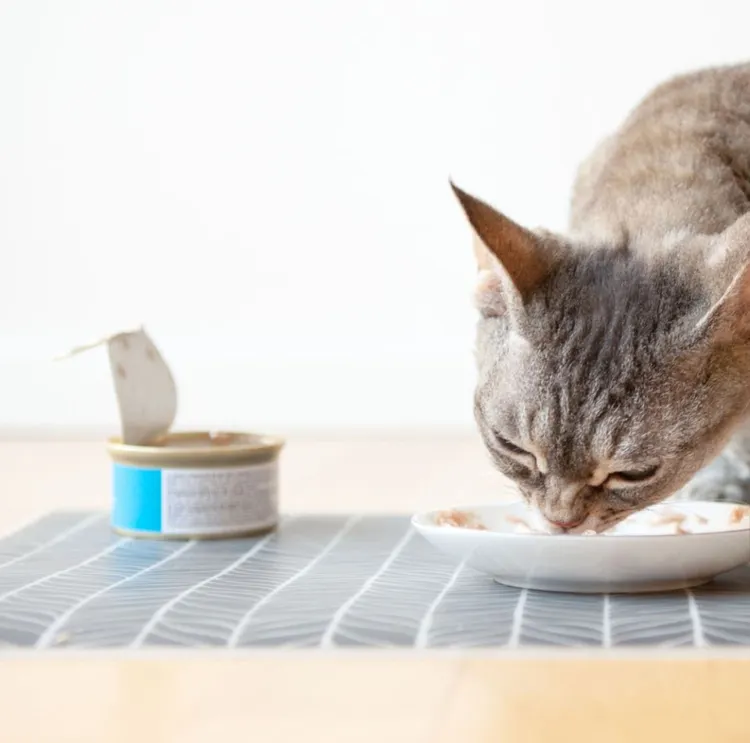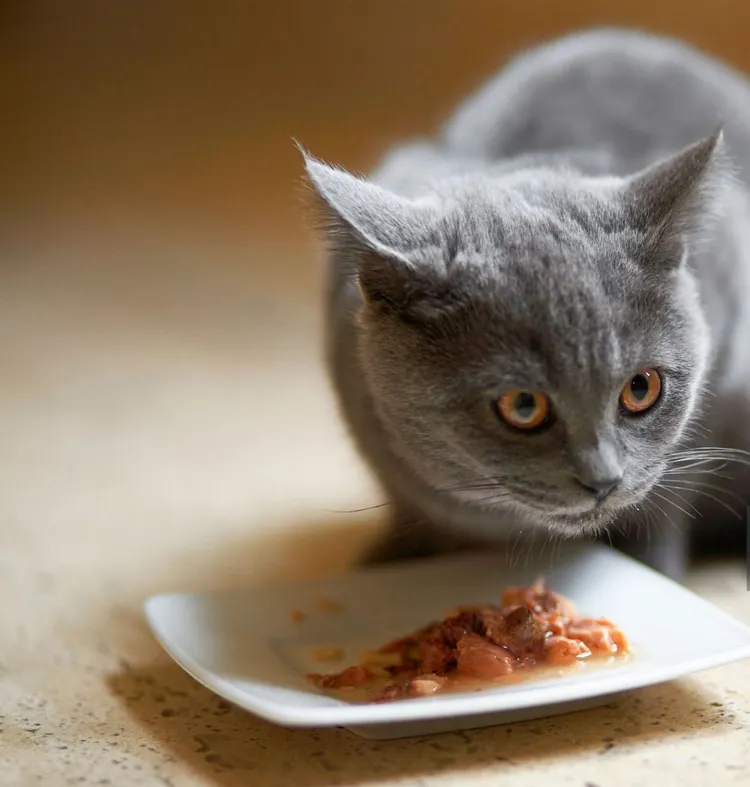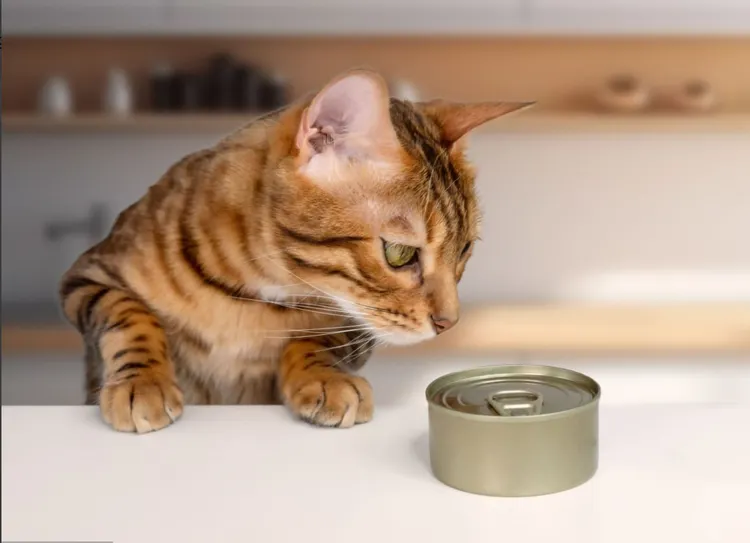As a loving cat parent, you’ve probably found yourself tempted to share your meals with your furry friend, especially when they stare up at you with those big, curious eyes. One such temptation might be canned salmon, a common staple in many kitchens. It seems healthy—after all, salmon is packed with nutrients that we know are good for humans. But before you pop open that can and share some with your cat, it’s essential to know whether canned salmon is actually safe for cats and how to serve it responsibly. In this post, we’ll explore everything from the nutritional value of canned salmon to eco-friendly tips on feeding your cat, so you can make an informed and sustainable choice.
Nutritional Breakdown of Canned Salmon: What’s in It?
Canned salmon, like its fresh counterpart, is packed with nutrients that can benefit humans and pets alike. However, it’s essential to understand both the benefits and potential risks when it comes to feeding this to your feline friend.
Key Nutrients in Canned Salmon:
- Protein: Salmon is an excellent source of high-quality animal protein, which is essential for cats. Cats are obligate carnivores, meaning they need animal protein to thrive.
- Omega-3 Fatty Acids: Salmon is rich in omega-3 fatty acids, which are beneficial for a cat’s coat, skin, and overall health. Omega-3s are also known to support joint health and reduce inflammation.
- Vitamins and Minerals: Canned salmon contains various vitamins like B vitamins (B12, B6), vitamin D, and minerals like selenium and potassium.
While these nutrients are beneficial, it’s crucial to recognize that canned salmon can also contain elements that may be harmful to your cat in large amounts.
Potential Downsides:
- Sodium: Many canned salmon products contain added salt to preserve the fish. Excessive sodium can lead to dehydration or even sodium poisoning in cats, which can be dangerous.
- Preservatives and Additives: Some canned salmon contains preservatives, such as sodium nitrite, or flavor enhancers, which are not suitable for cats.
- Mercury: Like other fish, salmon can contain trace amounts of mercury, which, in high quantities, can be toxic over time.
Can Cats Safely Eat Canned Salmon?
The answer is yes—with important conditions. While canned salmon can be safe for cats in moderation, there are several factors to consider to ensure it’s a healthy choice.
Benefits of Canned Salmon for Cats:
- Protein-Rich Treat: The high protein content in salmon can support muscle health and provide energy. This is great for active cats or those needing a protein boost in their diet.
- Omega-3 for Skin and Coat: Omega-3 fatty acids can help improve your cat’s skin health, reduce shedding, and give their coat a beautiful shine.
Risks of Feeding Canned Salmon:
- High Sodium Levels: As mentioned, many canned salmon products contain added salt. Always opt for unsalted, water-packed canned salmon to minimize the risk of sodium-related health issues.
- Mercury Exposure: Although canned salmon generally contains less mercury than larger predatory fish (like tuna), it’s still important to limit consumption to avoid long-term health problems.
- Potential Allergens: Some cats may have sensitivities or allergies to fish or fish-based products, resulting in gastrointestinal upset or skin issues.

How to Serve Canned Salmon to Cats
When feeding your cat canned salmon, ensure it’s prepared in the healthiest way possible. Here are some tips for serving it responsibly:
- Choose Water-Packed Salmon: Always go for canned salmon that’s packed in water, not oil. Oil can add unnecessary fats, and cats may have trouble digesting it.
- Look for Unsalted Varieties: Check the label to ensure there’s no added salt, which could harm your cat.
- Flake the Salmon and Remove Bones: Before serving, make sure to flake the salmon into small, manageable pieces, and remove any bones. While bones in canned salmon are generally soft and edible, it’s best to avoid any choking hazards.
- Portion Size Matters: Salmon should only be a small, occasional treat. A tablespoon or two mixed with their regular food can be a nice change without overloading their system.
Moderation is Key
While salmon is packed with beneficial nutrients, it’s important to remember that it should be treated as an occasional indulgence rather than a regular part of your cat’s diet.
How Often Can You Feed Canned Salmon to Your Cat?
A small portion once every week or two is enough to offer your cat the benefits without exposing them to potential risks. Always ensure the bulk of your cat’s diet consists of balanced, complete cat food that meets all their nutritional needs.
Feeding too much salmon, or other human foods, can lead to nutritional imbalances, which can affect your cat’s long-term health. Regular cat food is specifically designed to provide all the vitamins, minerals, and nutrients your cat needs to stay healthy.

Eco-Friendly Advice for Cat Owners
As pet owners, we can reduce our environmental impact by making sustainable choices for our pets. Here’s how you can incorporate eco-friendly practices into feeding your cat canned salmon:
1. Choose Sustainably Sourced Salmon:
Look for canned salmon that’s certified by organizations like the Marine Stewardship Council (MSC) or Best Aquaculture Practices (BAP). These certifications ensure that the fish is sourced responsibly, reducing harm to marine ecosystems.
2. Opt for BPA-Free Packaging:
BPA (bisphenol A) is a chemical often found in the linings of canned goods, which can be harmful to both pets and the environment. Choose salmon packed in BPA-free cans to minimize exposure to this harmful chemical.
3. Recycle the Can:
Don’t forget to recycle the can after feeding your cat. Aluminum cans are recyclable, and this simple step can help reduce waste and support eco-friendly practices.
Alternative Fishy Treats for Cats
If you’re looking for a sustainable alternative to canned salmon, consider these eco-friendly options:
- Sustainably Sourced Cat Treats: Many companies offer fish-flavored cat treats that are made with sustainably sourced ingredients. These treats provide the fishy flavor your cat loves without the environmental impact of overfishing.
- Freeze-Dried Fish: Another excellent option is freeze-dried fish treats, which retain the nutrients of the fish without preservatives or additives.
Signs of a Food Allergy in Cats
While canned salmon is safe for most cats, it’s important to watch for any signs of food allergies or intolerances. Common symptoms include:
- Vomiting or Diarrhea: These are the most immediate signs of an allergy or intolerance.
- Itchy Skin: Cats may develop skin issues, such as itching, redness, or hives, after consuming an allergen.
- Ear Infections: Chronic ear infections can sometimes be a sign of a food allergy.
If your cat shows any of these symptoms after eating salmon, stop feeding it immediately and consult your veterinarian.
Veterinarian Consultation: Why It’s Important
Before introducing any new food into your cat’s diet, especially human foods, it’s always a good idea to consult your veterinarian. They can help you determine whether salmon is safe for your cat and provide guidance on portion size and frequency.
Eco-Conscious Veterinary Care
If you’re eco-conscious, consider finding a vet who emphasizes sustainable practices, such as using natural, non-toxic products and reducing waste in their clinic. These vets can offer advice on sustainable pet care and eco-friendly food choices.
Conclusion: A Treat, Not a Meal
Canned salmon can be a delicious and nutritious treat for your cat, but it’s important to feed it responsibly. Opt for unsalted, water-packed varieties and serve it in moderation. Always prioritize your cat’s health by maintaining a balanced diet with complete cat food, and keep an eye out for any signs of food allergies. By choosing sustainable, eco-friendly options, you can enjoy the peace of mind that comes with knowing you’re making choices that are good for your cat and the planet.



